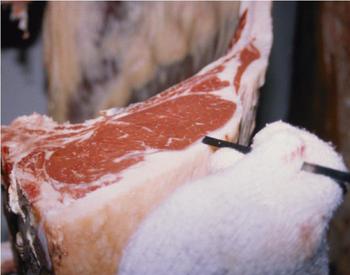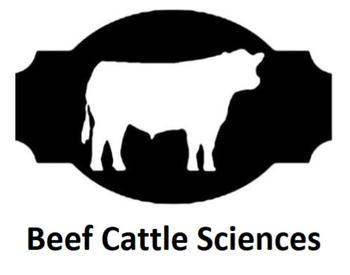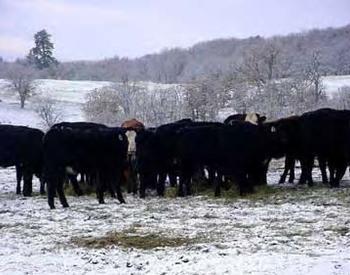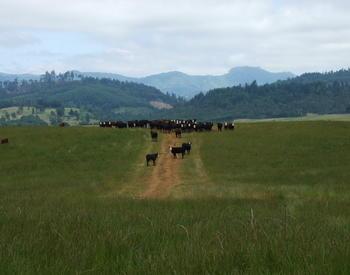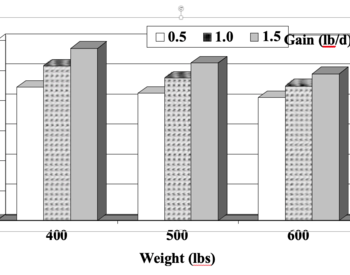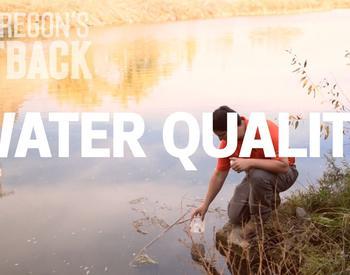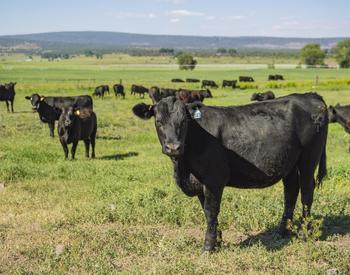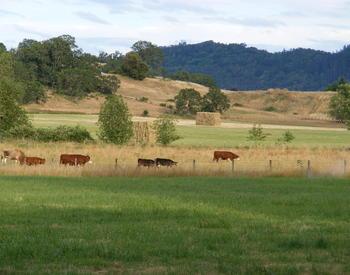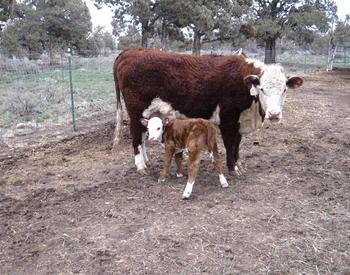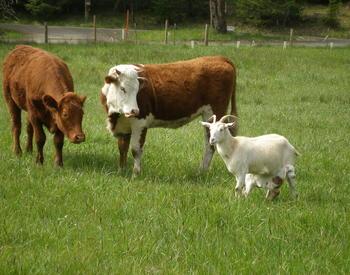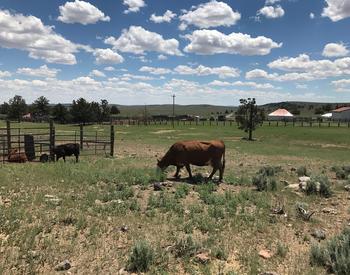When the costs of gain in the finishing phase are high, heavier weight cattle are more attractive to feeders compared to lighter weight cattle. This is evidenced by shrinking premiums for light-weight cattle sometimes seen in the marketplace. It also goes along perfectly with the historic pattern of price-weight slides, with lower premiums for lightweight cattle entering the feedlot compared to heavier weight cattle when corn prices increase and/or fed cattle prices decrease.
The driver behind heavier weight cattle being attractive to feeders is that they require fewer days on feed prior to harvest than the lighter weight calves, therefore the over-all cost of finishing them may be less. Added gain prior to entering the finishing phase can be more economical using lower cost feeds, such as grass and strategic supplements. Cow-calf and stocker cattle producers often wonder if it pays to send cattle to the feedlot or grass finishing segment heavier than usual. The questions that need to be addressed are: How much weight should be added, when will cattle be marketed, what is the cost of the extra gain, and what is an appropriate way to manage risk? Two different classes of cattle destined for the feedlots, calf-feds and yearlings, are examined here.
Calf-feds
Calf-feds are typically 5 to 7 month old calves that were recently weaned and placed directly into a feedlot setting. On average these calves spend approximately 250 to 280 days in the feedlot prior to slaughter. Usually, the availability of cheap grains allows feedlots to purchase these calves and feed them for extended periods of time (i.e. cheap cost per gain). Market conditions sometimes allow a niche for calf-feds.
Data out of Utah State University and University of California-Davis has shown that most weaned calves would be more profitable if they were “funneled” into stocker or intense grass feeding schemes. The one issue that has complicated this decision is the calf’s mature size. We have focused on cost of gain and on-feed weights, but it is the slaughter weight that may be the dictator of which program these calves should enter. If cow/calf operations are producing large-framed calves, then those calves may actually be more profitable going directly to a feedlot. Allowing them to graze and add frame has shown to result in a larger animal at time of slaughter (based on choice quality grade). Therefore, by moving those calves directly into a feedlot setting a feeder may actually reach acceptable quality and yield grades without having to attain heavier slaughter weights. This will be advantageous when packers are levying greater discounts on over-weight carcasses.
How do pre-conditioning programs fit into this? If producers are considering sending weaned calves directly to feedlots, a 30- or 45-day preconditioning program should be considered. The main point to remember is that these calves are immature, both physiologically and immunologically! If you have had illness problems with calves in the past or during the pre-weaning period then you may want to employ a pre-conditioning program. Either way, contact your potential feedlot cooperator and local veterinarian to get their input on pre-conditioning or other health programs for calf-feds.
Yearling cattle
One typical stocker cattle scenario is as follows. Spring born calves are weaned at 400 lb in October, grazed on fall pastures, over-wintered on harvested forages (good quality hay or balage) where they gain at a moderate rate (0.5 lb to 1.0 lb per day), then turned out weighing slightly over 500 lb onto non-irrigated, spring pastures to take advantage of abundant, high quality forages.
Here they gain an average of 2.5 lb per day. The range in daily gain can be anywhere between 1.0 and 4.0 lb. depending on the month. When the spring grass dries up, they are sold as 750 lb yearling feeder cattle. There are at least two opportunities for additional weight to be added to these cattle. The first is increasing the nutrient density of the wintering diet. The second is by extending the spring grazing period. Both scenarios could be achieved in a few different ways. Each feeding scheme would have to put weight on the animals economically. That is, the cost of added gain needs to more than pay for itself, including feed costs and the added risk of keeping cattle longer (equipment and labor costs, treatment for disease, death loss, etc.). Each producer needs to pencil it out on an individual basis.
One idea for adding weight to stocker cattle during the wintering period is as follows. Instead of good quality hay and balage, a higher quality hay and balage or supplement can be fed so that the stocker cattle gain more weight. Good quality forage providing 1.0 lb per day gain for 450 weight cattle would have to have an estimated 56% total digestible nutrients (TDN, energy) and 9.5% crude protein (CP). In order to achieve 2.0 lb per day gain, the ration would need to contain 63.5%TDN and 12% CP. Several forages and/or concentrates could provide the extra nutrients for the additional gain.
For adding weight to stocker cattle using an extended spring grazing period, irrigated pasture (rented or owned) could be provide to cattle for 45 days or so after the non-irrigated fields dry up. Summer pasture forage that is in the young, vegetative stage (leafy material) would probably yield a gain of at least 2 lb per day on the cattle. Left-over dried, non-irrigated pasture plus an appropriate amount of supplemental protein and energy could also provide the required nutrients. This last pasture would most likely contain forage that is in the reproductive stage (stocks and seed heads) which would have high fiber and low protein. Additionally, the digestibility of the forage would be low. A supplement would help the rumen microbes process this forage. It would also help the cattle meet their nutrient requirements for the desired gains.
Final notes
Regardless of what you feed your cattle, rations should be balanced for nutrients. Studies show this helps to save money and reach goals. Test feeds and blend appropriately. Calculate the price of feeds on cost per pound of nutrient (CP or TDN) rather than on cost per ton of each feed. Work with a nutritionist (OSU Extension Service faculty or private consultant) or use the free OSU Beef Nutrition Workbook.
Managing risk is important in assuring you don’t loose on your investment. This is especially important if you are trying a new production strategy. You can forward contract your cattle at a specific price or take insurance against declining market prices. Chicago Mercantile Exchange (CME) is one option; Livestock Risk Protection (LRP) insurance through USDA Risk Management Agency is another.
Some may question how alternate feeding schemes (longer on grass, strategic supplements) and age of animal (calf-feds verses yearlings) prior to the feedlot might affect the yield and quality grade and marketability of the beef product. Data has indicated that marbling is a linear process that occurs over the lifetime of the animal, but it is also energy dependent. Meaning, if the animal has the genetics to marble, then caloric intake is the primary regulator. Regardless of age of the animal, as long as adequate calories are provided during the feeding period (especially the last 120 days on feed) those calves can obtain an adequate amount of marbling to meet various quality grades. It is true that total pounds of beef produced may be greater with yearlings. However, yield grade (pounds of boneless, closely trimmed retail cuts) is influenced more by the degree of finish and genetics than by whether it is a calf-fed or a yearling. These animals can be fed to grade the same, but they would most likely finish at different weights. Whether or not the feedlot management takes them to that grade or endpoint is another matter. Feeders may respond to various market stimuli and harvest cattle earlier or later than a specific, predetermined finish (grade).
This document is part of the Oregon State University – Beef Cattle Library. Prior to acceptance, this document was anonymously reviewed by two experts in the area.
